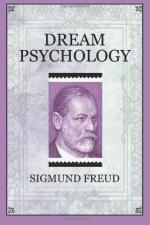But we must here take cognizance of an objection that is based on a better knowledge of the unconscious processes. Although we have ourselves described the unconscious wishes as always active, we have, nevertheless, asserted that they are not sufficiently strong during the day to make themselves perceptible. But when we sleep, and the unconscious wish has shown its power to form a dream, and with it to awaken the foreconscious, why, then, does this power become exhausted after the dream has been taken cognizance of? Would it not seem more probable that the dream should continually renew itself, like the troublesome fly which, when driven away, takes pleasure in returning again and again? What justifies our assertion that the dream removes the disturbance of sleep?
That the unconscious wishes always remain active is quite true. They represent paths which are passable whenever a sum of excitement makes use of them. Moreover, a remarkable peculiarity of the unconscious processes is the fact that they remain indestructible. Nothing can be brought to an end in the unconscious; nothing can cease or be forgotten. This impression is most strongly gained in the study of the neuroses, especially of hysteria. The unconscious stream of thought which leads to the discharge through an attack becomes passable again as soon as there is an accumulation of a sufficient amount of excitement. The mortification brought on thirty years ago, after having gained access to the unconscious affective source, operates during all these thirty years like a recent one. Whenever its memory is touched, it is revived and shows itself to be supplied with the excitement which is discharged in a motor attack. It is just here that the office of psychotherapy begins, its task being to bring about adjustment and forgetfulness for the unconscious processes. Indeed, the fading of memories and the flagging of affects, which we are apt to take as self-evident and to explain as a primary influence of time on the psychic memories, are in reality secondary changes brought about by painstaking work. It is the foreconscious that accomplishes this work; and the only course to be pursued by psychotherapy is the subjugate the Unc, to the domination of the Forec.
There are, therefore, two exits for the individual unconscious emotional process. It is either left to itself, in which case it ultimately breaks through somewhere and secures for once a discharge for its excitation into motility; or it succumbs to the influence of the foreconscious, and its excitation becomes confined through this influence instead of being discharged. It is the latter process that occurs in the dream. Owing to the fact that it is directed by the conscious excitement, the energy from the Forec., which confronts the dream when grown to perception, restricts the unconscious excitement of the dream and renders it harmless as a disturbing factor. When the dreamer wakes up for a moment, he has actually chased away




